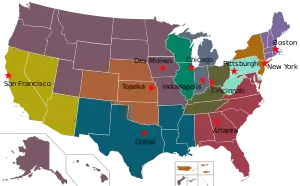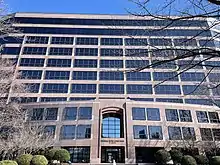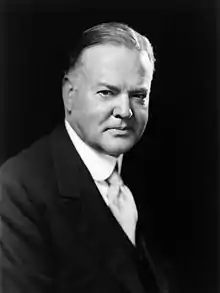
The Federal Home Loan Banks (FHLBanks, or FHLBank System) are 11 U.S. government-sponsored banks that provide liquidity to financial institutions to support housing finance and community investment.
Overview
The FHLBank System was chartered by Congress in 1932, during the Great Depression. It has a primary mission of providing member financial institutions with financial products/services which assist and enhance the financing of housing and community lending. The 11 FHLBanks are each structured as cooperatives owned and governed by their member financial institutions, which today include savings and loan associations (thrifts), commercial banks, credit unions and insurance companies.

Financial results and condition
Since August 2006, all 11 banks have been registered with the United States Securities and Exchange Commission and all financial statements and other filings are available to the public at the SEC web site (EDGAR).
On August 5, 2011, the Federal Housing Finance Agency announced that the FHLBanks had satisfied their obligation to make payments related to the Resolution Funding Corporation (RefCorp) bonds. The Banks were required to pay 20 percent of their net income (after payments to the Affordable Housing Program) toward the RefCorp bond payments. Each Bank now pays 20% of its net income into its own separate restricted retained earnings account until the account equals one percent of that Bank's outstanding consolidated obligations.[1]
History
As a result of the Great Depression the FHLBanks were established by the Federal Home Loan Bank Board (FHLBB) pursuant to the Federal Home Loan Bank Act of 1932.
Initially, the FHLBanks made direct loans to home owners, but transferred this responsibility to the Home Owners' Loan Corporation when it was created the following year.[2]
As a result of the savings and loan crisis of the 1980s, the Financial Institutions Reform, Recovery and Enforcement Act of 1989 (FIRREA) abolished the FHLBB and transferred oversight responsibility of the FHLBanks to the Federal Housing Finance Board (FHFB) and regulatory responsibility to the Office of Thrift Supervision (OTS) in the Department of the Treasury.
As a result of the late-2000s financial crisis the Housing and Economic Recovery Act of 2008 (HERA) replaced the FHFB with the Federal Housing Finance Agency (FHFA). The Secretary of the Treasury was authorized to purchase FHLBank debt securities in any amount through December 31, 2009, after which the limit would return to the original $4 billion.
As a result of the late-2000s recession, the Dodd-Frank Wall Street Reform and Consumer Protection Act transferred functions of the OTS to the Office of the Comptroller of the Currency (OCC), the Federal Deposit Insurance Corporation (FDIC), the Federal Reserve Board of Governors, and the Consumer Financial Protection Bureau (CFPB) as of July 21, 2011.
Related legislation
To amend the Federal Home Loan Bank Act to authorize privately insured credit unions to become members of a Federal home loan bank (H.R. 3584; 113th Congress) - a bill that would amend the Federal Home Loan Bank Act to treat certain privately insured credit unions as insured depository institutions for purposes of determining eligibility for membership in a federal home loan bank.[3][4] This change would make such credit unions "eligible for membership in the Federal Home Loan Bank System."[5]
Cryptocurrency bank loans
The 11 FHLBanks are independent, privately-owned cooperatives that provide on-demand liquidity in the form of loans called advances to 6,800[6] member financial institutions that meet stringent credit requirements and post and maintain adequate collateral. In 2023, a few member banks with exposure to the cryptocurrency industry (Silvergate Capital Corporation, Signature Bank and Metropolitan Bank Holding Corporation) received FHLB loans in response to a run on deposit withdrawals. These billions in loans were not related to mortgage lending. Some have criticized such lending practices. Bloomberg Businessweek quoted Michael Bright, chief executive officer of the trade group Structured Finance Association and a former interim head of the Government National Mortgage Association or Ginnie Mae as saying, “It’s a strange irony. You have a lot of banks that access the FHLBs, but aren’t using advances for mortgage liquidity”[7][8][9][10] Other banking experts such as Mark T. Williams from Boston University, in the Financial Times, point to the important on-demand liquidity and shock absorber role the FHLBanks perform in times of financial crisis. He contends that the March 2023 bank runs would have been more pronounced had such lending not been available.[11]
See also
References
- ↑ "FHFA Announces Completion of RefCorp Obligation and Approves FHLB Plans to Build Capital" (PDF) (Press release). Federal Housing Finance Agency. 5 August 2011. Archived from the original (PDF) on 30 August 2011. Retrieved 5 August 2011.
- ↑ "First Annual Report of the Federal Home Loan Bank Board Covering Operations of the Federal Home Loan Banks, The Home Owners' Loan Corporation, and Federal Savings and Loan Promotion Activities from the Date of Their Creation through December 31, 1933". Federal Home Loan Bank Board. January 30, 1934. Retrieved September 29, 2017.
- ↑ "H.R. 3584 - Summary". United States Congress. Retrieved 4 May 2014.
- ↑ "UsMilitaryLendingCorp.com". usmilitarylendingcorp.com.
- ↑ Marcos, Cristina (2 May 2014). "The week ahead: House to hold ex-IRS official in contempt". The Hill. Retrieved 5 May 2014.
- ↑ "6800 members".
- ↑ "FHLB".
- ↑ Max Reyes, Austin Weinstein, Allyson Versprille, Katanga Johnson, Crypto Chaos Snags Wall Street Lender of Next-to-Last Resort, FHLB program’s loans to crypto-friendly banks draw scrutiny, Critics see mission-creep in decades-old program for mortgages, Bloomberg Businessweek, January 24, 2023.
- ↑ Kyle Campbell, Bailout or business as usual? Home Loan bank-crypto ties raise red flags, American Banker, January 19, 2023.
- ↑ Eric Wallerstein, Crypto Banks Borrow Billions From Home-Loan Banks to Plug Shortfalls Signature and Silvergate turn to government-chartered lenders after customer withdrawals surge, Wall Street Journal, January 21, 2023.
- ↑ "FT Article".
Further reading
- For a list of articles discussing the Federal Home Loan Bank System, Fannie Mae, and Freddie Mac, see Fannie Mae and Freddie Mac: A Bibliography.
- Susan M. Hoffman and Mark K. Cassell, eds. Mission Expansion in the Federal Home Loan Bank System (State University of New York Press; 2010) 208 pages
- Thomson, James B. and Matthew Koepke. "Federal Home Loan Banks: The Housing GSE That Didn’t Bark in the Night?," Economic Trends 09.23.10 (Federal Reserve Bank of Cleveland) online
External links
- Council of FHLBanks
- FHLBanks Office of Finance
- Federal Housing Finance Agency
- SEC filings from the FHLBanks
Banks
- Federal Home Loan Bank of Atlanta
- Federal Home Loan Bank of Boston
- Federal Home Loan Bank of Chicago
- Federal Home Loan Bank of Cincinnati
- Federal Home Loan Bank of Dallas
- Federal Home Loan Bank of Des Moines
- Federal Home Loan Bank of Indianapolis
- Federal Home Loan Bank of New York
- Federal Home Loan Bank of Pittsburgh
- Federal Home Loan Bank of San Francisco
- Federal Home Loan Bank of Topeka

